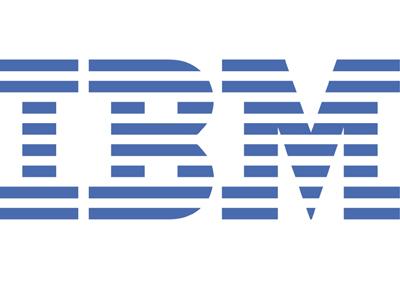 Lots of data-analytics platforms on the market can crunch massive datasets and spit out an insight of some sort, but fewer show how the software arrived at its conclusion. That isn’t a big deal for business functions in which only the final answer matters, and employees trust the underlying software to calculate data correctly. But physicians operate on a different standard: if a medical-analytics platform spits back a particular diagnosis or recommendation, they need to see how the machine arrived at that conclusion. To that end, IBM is working on two new projects in collaboration with the Cleveland Clinic Lerner College of Medicine of Case Western Reserve University: WatsonPaths and Watson EMR Assistant. Both are offshoots of IBM’s increased use of its Watson supercomputer as a health-diagnosis tool. WatsonPaths details how Watson uses structured and unstructured datasets to arrive at a particular result. “On Jeopardy! it was not necessarily critical to know how Watson arrived at its answer,” Eric Brown, IBM Research Director of Watson Technologies, wrote in a statement. “But doctors or domain experts in any field will want to understand what information sources Watson consulted, what logic it applied and what inferences it made in arriving at a recommendation.” In other words, WatsonPaths creates a chain of evidence from medical journals and other reference materials; using that information, medical experts can decide which pieces of evidence are more important, and feed additional information into the system in order to produce more refined insights. WatsonPaths “learns” from each experience, making the overall system more intelligent. Watson EMR Assistant analyzes electronic medical records, leveraging Watson’s natural language processing in order to make better sense of discordant and sometimes conflicting data. In theory, use of this platform will result in more dynamic technologies that allow medical experts to isolate and focus on relevant bits of data within giant stacks of records. IBM has initiated a number of Watson-related alliances with hospitals and health-insurance providers. In February, for example, the company joined with WellPoint and Memorial Sloan-Kettering Cancer Center in New York City to train Watson in processing and interpreting oncology data. As a part of that effort, clinicians and other human trainers spent nearly 15,000 hours “teaching” Watson how to interpret clinical information; they also fed the supercomputer more than 600,000 pieces of medical evidence, along with two million pages of text from 42 medical journals and clinical trials. Image: IBM
Lots of data-analytics platforms on the market can crunch massive datasets and spit out an insight of some sort, but fewer show how the software arrived at its conclusion. That isn’t a big deal for business functions in which only the final answer matters, and employees trust the underlying software to calculate data correctly. But physicians operate on a different standard: if a medical-analytics platform spits back a particular diagnosis or recommendation, they need to see how the machine arrived at that conclusion. To that end, IBM is working on two new projects in collaboration with the Cleveland Clinic Lerner College of Medicine of Case Western Reserve University: WatsonPaths and Watson EMR Assistant. Both are offshoots of IBM’s increased use of its Watson supercomputer as a health-diagnosis tool. WatsonPaths details how Watson uses structured and unstructured datasets to arrive at a particular result. “On Jeopardy! it was not necessarily critical to know how Watson arrived at its answer,” Eric Brown, IBM Research Director of Watson Technologies, wrote in a statement. “But doctors or domain experts in any field will want to understand what information sources Watson consulted, what logic it applied and what inferences it made in arriving at a recommendation.” In other words, WatsonPaths creates a chain of evidence from medical journals and other reference materials; using that information, medical experts can decide which pieces of evidence are more important, and feed additional information into the system in order to produce more refined insights. WatsonPaths “learns” from each experience, making the overall system more intelligent. Watson EMR Assistant analyzes electronic medical records, leveraging Watson’s natural language processing in order to make better sense of discordant and sometimes conflicting data. In theory, use of this platform will result in more dynamic technologies that allow medical experts to isolate and focus on relevant bits of data within giant stacks of records. IBM has initiated a number of Watson-related alliances with hospitals and health-insurance providers. In February, for example, the company joined with WellPoint and Memorial Sloan-Kettering Cancer Center in New York City to train Watson in processing and interpreting oncology data. As a part of that effort, clinicians and other human trainers spent nearly 15,000 hours “teaching” Watson how to interpret clinical information; they also fed the supercomputer more than 600,000 pieces of medical evidence, along with two million pages of text from 42 medical journals and clinical trials. Image: IBM IBM Making Watson Show Its (Medical) Work
 Lots of data-analytics platforms on the market can crunch massive datasets and spit out an insight of some sort, but fewer show how the software arrived at its conclusion. That isn’t a big deal for business functions in which only the final answer matters, and employees trust the underlying software to calculate data correctly. But physicians operate on a different standard: if a medical-analytics platform spits back a particular diagnosis or recommendation, they need to see how the machine arrived at that conclusion. To that end, IBM is working on two new projects in collaboration with the Cleveland Clinic Lerner College of Medicine of Case Western Reserve University: WatsonPaths and Watson EMR Assistant. Both are offshoots of IBM’s increased use of its Watson supercomputer as a health-diagnosis tool. WatsonPaths details how Watson uses structured and unstructured datasets to arrive at a particular result. “On Jeopardy! it was not necessarily critical to know how Watson arrived at its answer,” Eric Brown, IBM Research Director of Watson Technologies, wrote in a statement. “But doctors or domain experts in any field will want to understand what information sources Watson consulted, what logic it applied and what inferences it made in arriving at a recommendation.” In other words, WatsonPaths creates a chain of evidence from medical journals and other reference materials; using that information, medical experts can decide which pieces of evidence are more important, and feed additional information into the system in order to produce more refined insights. WatsonPaths “learns” from each experience, making the overall system more intelligent. Watson EMR Assistant analyzes electronic medical records, leveraging Watson’s natural language processing in order to make better sense of discordant and sometimes conflicting data. In theory, use of this platform will result in more dynamic technologies that allow medical experts to isolate and focus on relevant bits of data within giant stacks of records. IBM has initiated a number of Watson-related alliances with hospitals and health-insurance providers. In February, for example, the company joined with WellPoint and Memorial Sloan-Kettering Cancer Center in New York City to train Watson in processing and interpreting oncology data. As a part of that effort, clinicians and other human trainers spent nearly 15,000 hours “teaching” Watson how to interpret clinical information; they also fed the supercomputer more than 600,000 pieces of medical evidence, along with two million pages of text from 42 medical journals and clinical trials. Image: IBM
Lots of data-analytics platforms on the market can crunch massive datasets and spit out an insight of some sort, but fewer show how the software arrived at its conclusion. That isn’t a big deal for business functions in which only the final answer matters, and employees trust the underlying software to calculate data correctly. But physicians operate on a different standard: if a medical-analytics platform spits back a particular diagnosis or recommendation, they need to see how the machine arrived at that conclusion. To that end, IBM is working on two new projects in collaboration with the Cleveland Clinic Lerner College of Medicine of Case Western Reserve University: WatsonPaths and Watson EMR Assistant. Both are offshoots of IBM’s increased use of its Watson supercomputer as a health-diagnosis tool. WatsonPaths details how Watson uses structured and unstructured datasets to arrive at a particular result. “On Jeopardy! it was not necessarily critical to know how Watson arrived at its answer,” Eric Brown, IBM Research Director of Watson Technologies, wrote in a statement. “But doctors or domain experts in any field will want to understand what information sources Watson consulted, what logic it applied and what inferences it made in arriving at a recommendation.” In other words, WatsonPaths creates a chain of evidence from medical journals and other reference materials; using that information, medical experts can decide which pieces of evidence are more important, and feed additional information into the system in order to produce more refined insights. WatsonPaths “learns” from each experience, making the overall system more intelligent. Watson EMR Assistant analyzes electronic medical records, leveraging Watson’s natural language processing in order to make better sense of discordant and sometimes conflicting data. In theory, use of this platform will result in more dynamic technologies that allow medical experts to isolate and focus on relevant bits of data within giant stacks of records. IBM has initiated a number of Watson-related alliances with hospitals and health-insurance providers. In February, for example, the company joined with WellPoint and Memorial Sloan-Kettering Cancer Center in New York City to train Watson in processing and interpreting oncology data. As a part of that effort, clinicians and other human trainers spent nearly 15,000 hours “teaching” Watson how to interpret clinical information; they also fed the supercomputer more than 600,000 pieces of medical evidence, along with two million pages of text from 42 medical journals and clinical trials. Image: IBM 
